Volkswagen Amarok Review (2023MY)
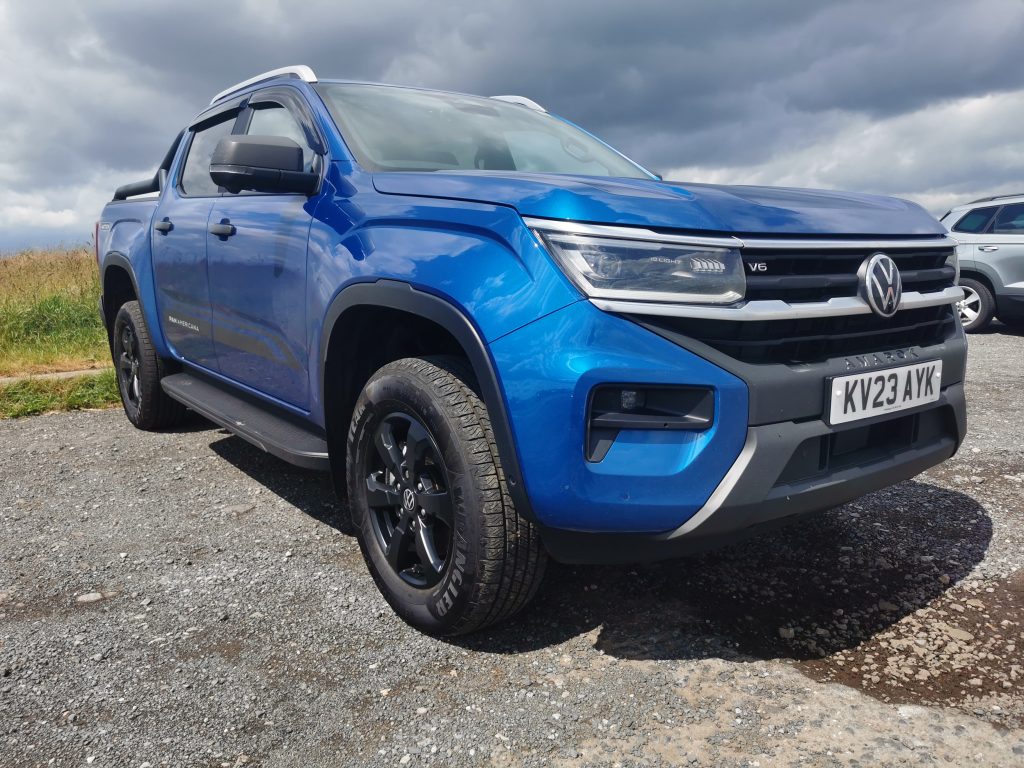
With Volkswagen only entering the 4×4 pick up market in the UK with the Amarok in 2011, it came a surprise to many that just 9 years later the company chose to withdraw the vehicle, production capacity being prioritised for other models. At a similar time, Nissan, Mitsubishi, Fiat and Mercedes-Benz also took the decision (for differing reasons) to exit the sector, leaving the few players left to cater for the demand for these vehicles.
2020 saw Volkswagen and Ford entering into a joint venture for developing and manufacturing future commercial vehicles so as the opportunity for the German company to share a platform with the next generation Ford Ranger was plain to see it was little surprise that a new Amarok would be forthcoming.
Making comparisons with the Ranger are hard to avoid, but Volkswagen claims to have gone to great lengths to distinguish the truck from its Ford sibling, suggesting that it is a more premium product despite there being much in common between the two. Although this is evident in parts the differences are primarily cosmetic in nature, changes not as striking as those made by Mercedes-Benz when designing the X-Class, some substantial re-engineering of the chassis being carried out to make the driving experience different to that of the Nissan Navara upon which the truck was based.
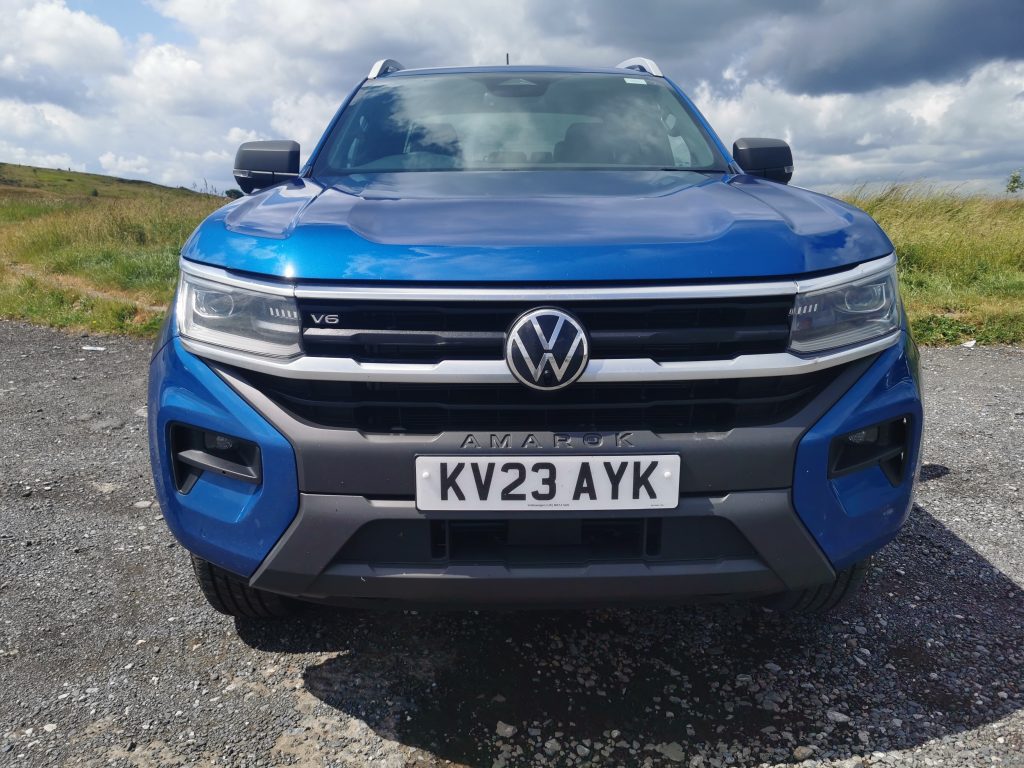
The Range
All Amaroks are four wheel drive double cabs, there being no regular or super cab options. Trim levels start with the lead in Life, the only model offered with a 170PS diesel engine and manual gearbox. Amarok Style follows, now with a choice of 205PS or 240PS power units both with a 10-speed automatic transmission and next up is the PanAmericana, the vehicle Volkswagen provided for this review with the 240PS engine the only option.
Although the flagship Amarok Aventura sits just £800 above the PanAmericana in the price list it has a sub 1000kg payload, meaning that for taxation purposes it is essentially a passenger car. VAT cannot be reclaimed, and the combination of list price and Co2 output will make the benefit in kind tax burden eye wateringly high. On paper at least, there is little to justify a move up to Aventura, the truck not being comparable to the Ranger Raptor which also has the same taxation challenges.
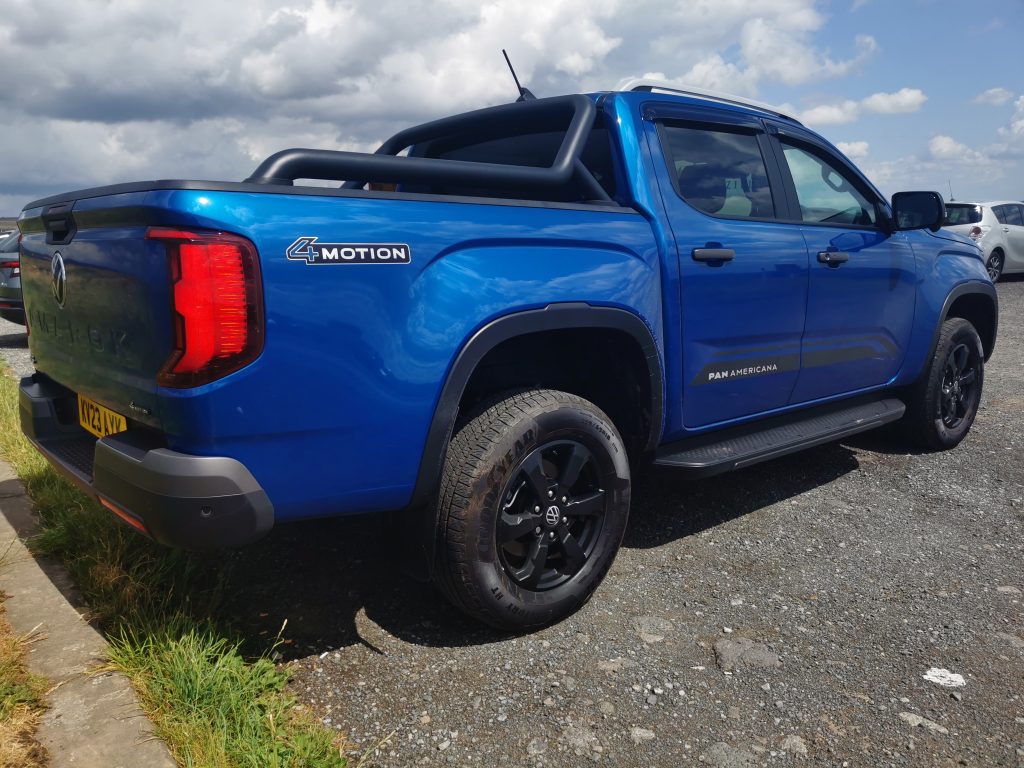
On the outside
It’s hard to argue that the PanAmericana doesn’t look good. With the bold corporate grill design through to the black decals along the side with the PanAmericana logo, to the black styling bar and alloy wheels finished in the same shade, and the bold AMAROK lettering on the tailgate it turned heads wherever I took it – possibly because of curiosity as the new Amarok won’t have previously been seen on the road, but also for its combination of brutish but stylish looks, commented on by friends and neighbours.
In comparison to the old Amarok, inheriting the design of the Ranger has provided some significant, positive changes. The wheelbase has been increased by over 17 centimetres, providing rear seat passengers with additional legroom. An increase in ground clearance means that the wading depth is now 800mm, compared to 300mm previously, and the old models uncompetitive towing capacity of 3100kg has now increased to the sector standard of 3500kgs that customers have come to expect. Payload is a whisker over 1040kgs.
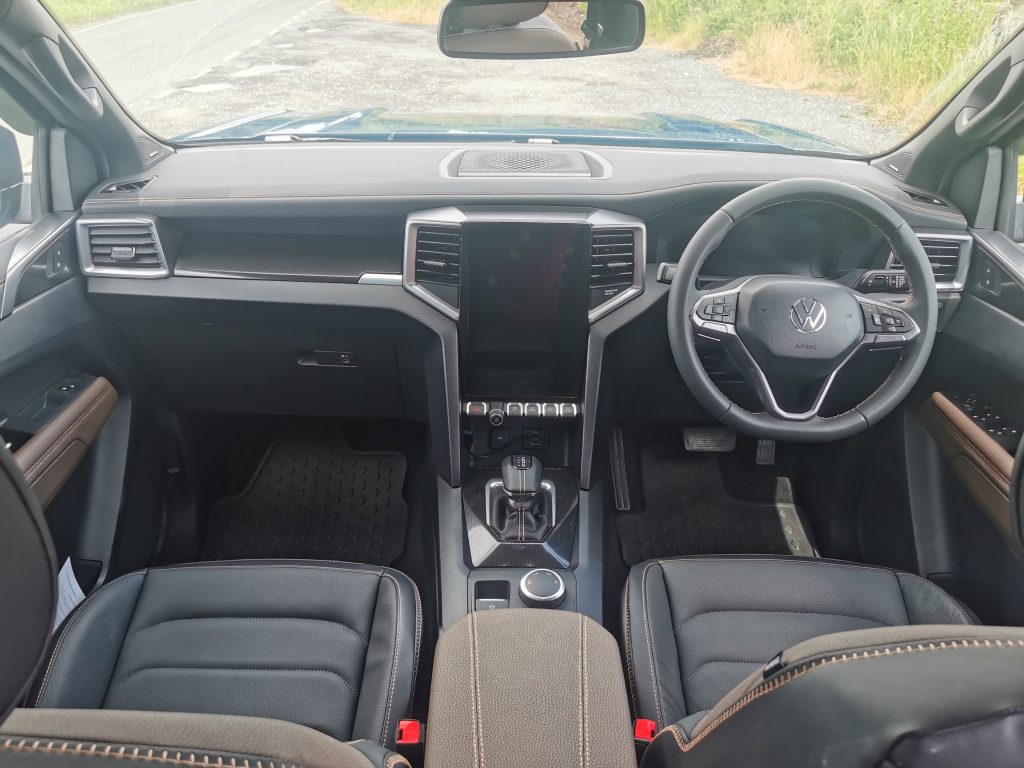
In the Cab
If Volkswagen had the aim of making the cab environment superior to anything else in the pickup segment, then the company has succeeded. The bar continues to be raised, and for the time being at least, the Amarok is right up there at the top.
The whole environment would not be out of place in a quality SUV. Black trim is contrasted by brown sections, and matching stitching is evident on the dash, centre console, door trims, transmission selector and the leather seats with the air vents being surrounded by a brushed aluminium effect. All materials feel to be of high quality, attractive but robust.
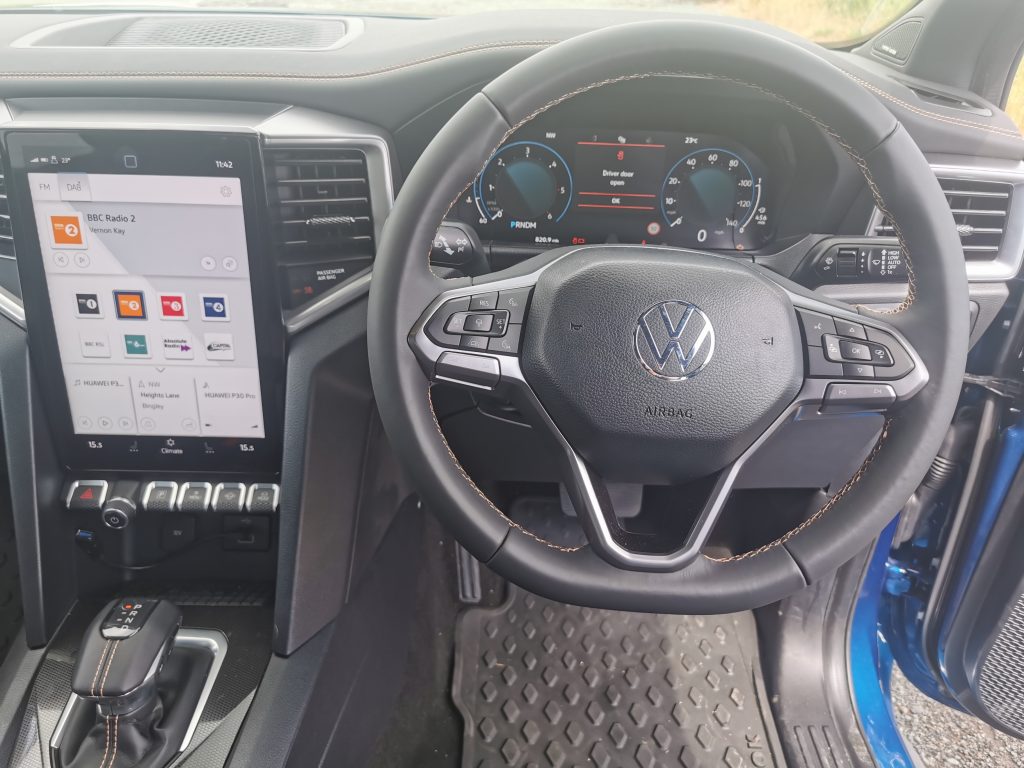
Dominating the dash is the 12” portrait orientated ‘Tesla style’ centrally positioned touchscreen allowing access to phone, multimedia, navigation, vehicle system and ventilation controls, smartphone integration, reverse camera and 360 degree overhead views. If I’m honest, I’m not a fan of heating and ventilation controls being accessed via these screens, an increasing trend. It takes time to select the correct screen and adjusting the temperature in particular can be fiddly – not a good thing when you’re driving. I much prefer physical knobs and buttons which are quick to use. The instrument panel is also of the digital variety, the clear 12” screen having seemingly endless options allowing you to display the information of your preference.
It’s worth mentioning the Harman Kardon premium audio system included in PanAmerican trim spec – it’s got 8 speakers including a sub woofer and a somewhat ridiculous 640 watts output. Also important to note is the inclusion of up to 20 ADAS features in the Amarok, providing an excellent level of safety tech as standard.
There’s not a huge amount of cab storage space, clearly more comparable to that found in a car rather than a commercial vehicle, but the glovebox is a decent size, as is the lidded box situated between the driver and passenger seat.
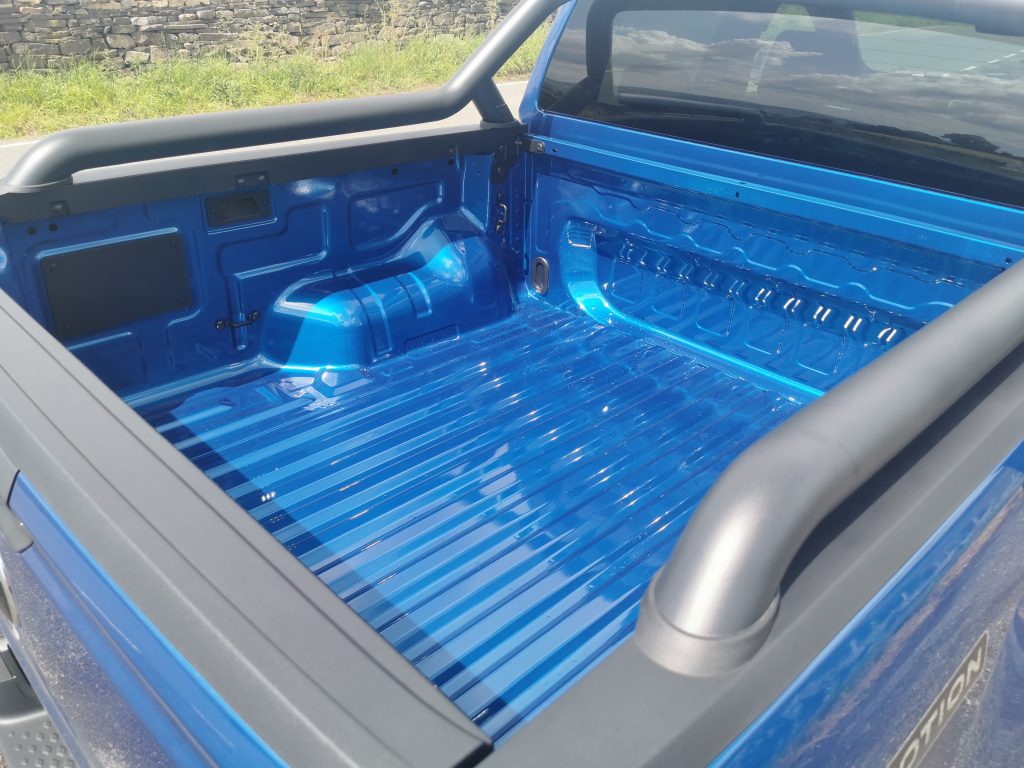
The load area
To some degree it is what it is with a pick up. The Amarok’s load bed measures 1624mm long, 1584mm wide (1224mm between the wheelarches) and there are 6 very sturdy looking load lashing points, 3 on each side. The only negative aspect? A hydraulically assisted tailgate is lacking, something offered as standard on competitor products and appreciated by those regularly loading and unloading. Hats off to Volkswagen however for, at this trim level anyway including LED loadbay lighting.
On the road
If Volkswagen has raised the bar on the cab interior, when it comes to the driving experience they have well and truly vaulted it. Amarok is just sublime on the road and it’s easy to run out of superlatives in describing it.
The V6 diesel engine and 10-speed automatic transmission work in perfect harmony. If you’re driving gently, the engine is quiet, the ratio changes almost imperceptible. Put your foot down and there is that unmistakable sound of a V6 engine, the gear changes becoming much more noticable. 62mph is reached in 9 seconds although it actually feels quicker than that.
What is probably most noticeable when driving is how eerily quiet the Amarok is. Intrusion into the cab from any source is somewhere between minimal to zero, road noise in particular has been suppressed by an incredible amount, something you can usually rely on to be heard in a pick up due to the size of the tyres. The truck glides along with barely a sound to be heard, just a little wind noise from the door mirrors being evident at speed.
The new Amarok benefits from electromechanical power steering rather than the more traditional hydraulic variety. Whilst the transition to this system hasn’t worked too well on some vans, the balance between weight and feedback is just right here. The truck handles well and, although due to insurance restrictions I wasn’t able to take the pickup off-road, I understand that the Amarok is, as expected, very capable indeed.
Ride quality is excellent with bumps effortlessly being absorbed – the closest competitor in this regard so far tested is the previous generation Ranger Raptor which glides over rough terrain as if it’s not there.
The line of the dashboard is quite high, and whilst I didn’t take advantage of all the 10 ways of adjusting the drivers seat, there were a few occasions when manoeuvring where, despite the multiple audio and visual aids I found myself leaning up, attempting to see the leading edge of the bonnet as a point of reference.
Running Costs
Try as I might, despite the official WLTP Combined fuel consumption figure of around 28mpg, I couldn’t get above 26mpg on any trip I took, no matter how gently I drove, so you’ll be a fairly regular visitor to the fuel pumps. Warranty duration is, at the time of writing 5 years, extended from the regular 3 offered by the manufacturer and I’d expect residual values to be high, keeping holding costs (and lease rates) down.
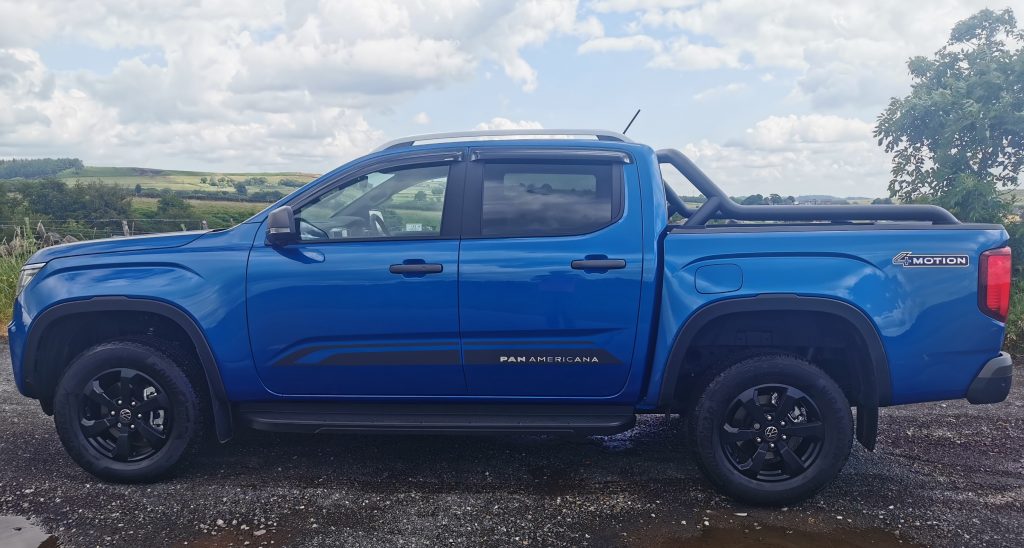
Conclusion
It’s really hard to fault the Amarok – it doesn’t fail in any aspect and excels in pretty much everything. In its first incarnation its probably fair to say that at launch some were underwhelmed at the product of a premium vehicle manufacturer but that’s certainly not the case this time.
Amaroks main competition will almost certainly be from Ford and, with the products sharing so much it could ultimately be down to a combination of price and brand loyalty. The truck tested has a list price of £46200 + VAT but with the broadly comparable Ranger Platinum coming in at just £300 less many may be tempted by the allure of the Volkswagen badge…